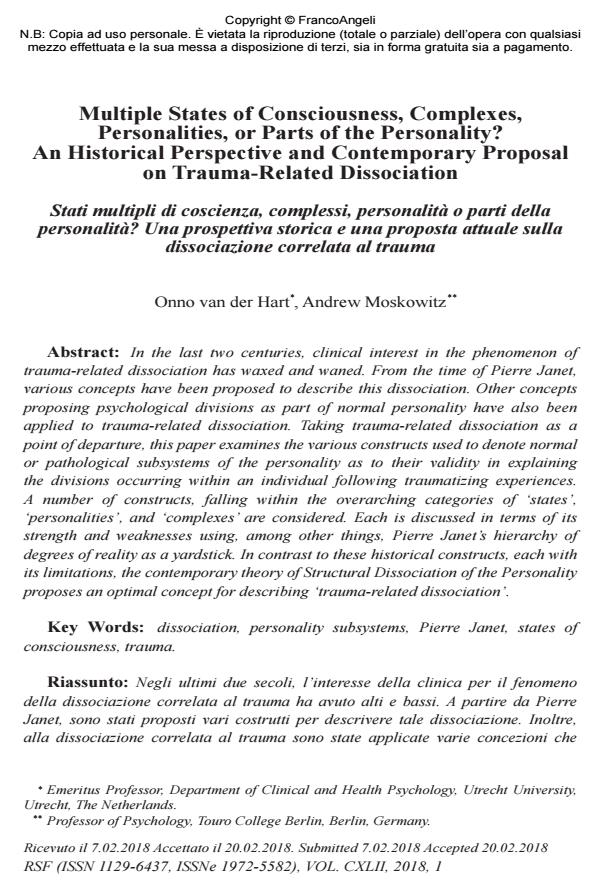Multiple States of Consciousness, Complexes, Personalities, or Parts of the Personality? An Historical Perspective and Contemporary Proposal on Trauma-Related Dissociation
Journal title RIVISTA SPERIMENTALE DI FRENIATRIA
Author/s Onno van der Hart, Andrew Moskowitz
Publishing Year 2018 Issue 2018/1
Language English Pages 21 P. 51-71 File size 1759 KB
DOI 10.3280/RSF2018-001004
DOI is like a bar code for intellectual property: to have more infomation
click here
Below, you can see the article first page
If you want to buy this article in PDF format, you can do it, following the instructions to buy download credits

FrancoAngeli is member of Publishers International Linking Association, Inc (PILA), a not-for-profit association which run the CrossRef service enabling links to and from online scholarly content.
In the last two centuries, clinical interest in the phenomenon of trauma-related dissociation has waxed and waned. From the time of Pierre Janet, various concepts have been proposed to describe this dissociation. Other concepts proposing psychological divisions as part of normal personality have also been applied to trauma-related dissociation. Taking trauma-related dissociation as a point of departure, this paper examines the various constructs used to denote normal or pathological subsystems of the personality as to their validity in explaining the divisions occurring within an individual following traumatizing experiences. A number of constructs, falling within the overarching categories of ‘states’, ‘personalities’, and ‘complexes’ are considered. Each is discussed in terms of its strength and weaknesses using, among other things, Pierre Janet’s hierarchy of degrees of reality as a yardstick. In contrast to these historical constructs, each with its limitations, the contemporary theory of Structural Dissociation of the Personality proposes an optimal concept for describing ‘trauma-related dissociation’.
Keywords: Dissociation, personality subsystems, Pierre Janet, states of consciousness, trauma.
Onno van der Hart, Andrew Moskowitz, Multiple States of Consciousness, Complexes, Personalities, or Parts of the Personality? An Historical Perspective and Contemporary Proposal on Trauma-Related Dissociation in "RIVISTA SPERIMENTALE DI FRENIATRIA" 1/2018, pp 51-71, DOI: 10.3280/RSF2018-001004